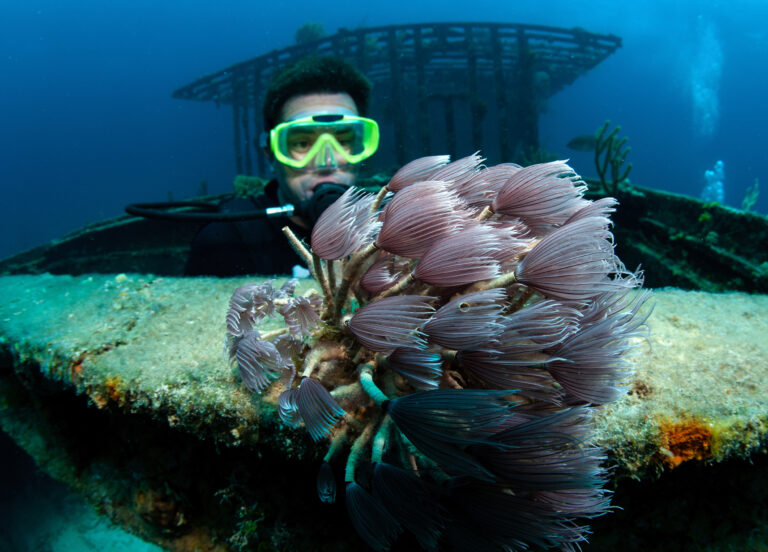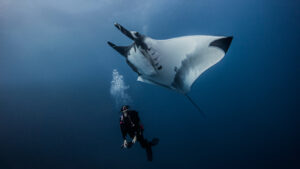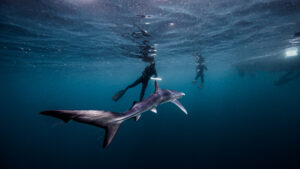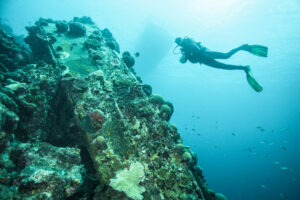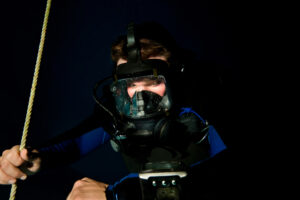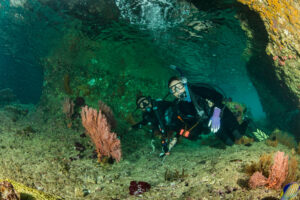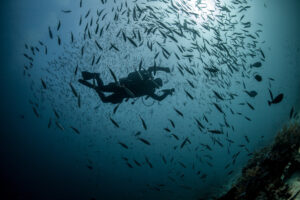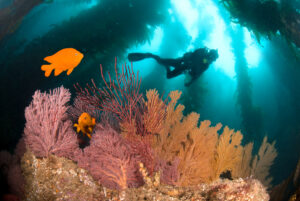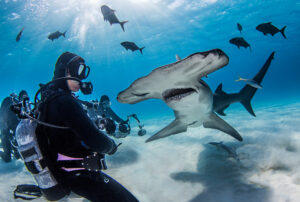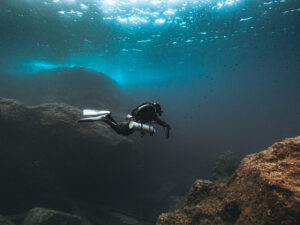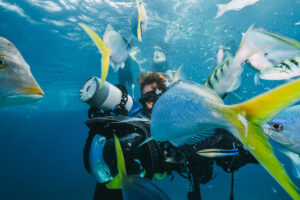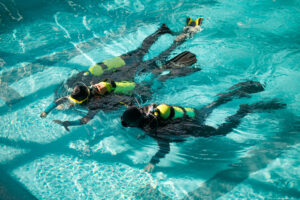What is Hypoventilation?
Hypoventilation, a crucial concept in scuba diving, refers to a reduced rate or depth of breathing that results in inadequate ventilation and increased levels of carbon dioxide (CO2) in the blood. Understanding hypoventilation is essential for scuba divers, as it directly impacts their safety and overall diving experience. In the underwater environment, where divers are subject to various physical and physiological stressors, maintaining proper breathing patterns is vital to avoid complications such as hypercapnia and its associated risks. This entry will delve into the physiology of breathing underwater, the mechanisms and causes of hypoventilation, its effects on divers, and best practices for prevention and management.
Physiology of Breathing Underwater
Breathing underwater involves a complex interplay of physiological processes that differ significantly from breathing on land. At the surface, breathing is a relatively straightforward process where oxygen (O2) is inhaled into the lungs, and CO2, a waste product of metabolism, is exhaled. However, underwater, the increased pressure affects the respiratory dynamics, necessitating a more detailed understanding.
As a diver descends, the pressure of the surrounding water increases by approximately one atmosphere for every 10 meters (32.8 feet) of depth. This increased pressure affects the density of the breathing gas, making it denser and more challenging to inhale and exhale. Consequently, divers must exert more effort to breathe, which can lead to changes in their breathing patterns, including a tendency to take shallower breaths.
Moreover, the equipment used in scuba diving, such as regulators and breathing apparatus, also influences the breathing process. Regulators are designed to deliver air at the ambient pressure, which means that as a diver goes deeper, the regulator must provide air at a higher pressure to match the surrounding water pressure. This mechanism ensures that divers receive an adequate supply of air regardless of depth, but it also requires them to adjust their breathing technique to accommodate the increased resistance and density of the air.
Definition and Mechanisms of Hypoventilation
Hypoventilation is characterized by inadequate ventilation, leading to insufficient gas exchange in the lungs and a subsequent buildup of CO2 in the bloodstream. In the context of scuba diving, hypoventilation can occur due to various voluntary and involuntary factors that affect a diver’s breathing patterns.
Voluntary hypoventilation often results from divers consciously taking shallow breaths to conserve air or minimize movement in challenging conditions. This practice, although seemingly beneficial for air conservation, reduces the efficiency of gas exchange and leads to an accumulation of CO2. Divers might also breathe more slowly or hold their breath, intentionally or unintentionally, especially when trying to focus on underwater tasks or deal with anxiety.
Involuntary hypoventilation, on the other hand, can be caused by factors such as fatigue, exertion, and the physical effects of cold water. Cold water exposure, in particular, can trigger a diver’s mammalian diving reflex, which includes a natural tendency to reduce breathing rate to conserve oxygen. Additionally, the increased work of breathing due to dense air at depth can cause divers to subconsciously adopt shallower breathing patterns, further contributing to hypoventilation.
The combination of these voluntary and involuntary mechanisms makes hypoventilation a common issue among divers, necessitating a thorough understanding of its causes and prevention strategies.
Causes of Hypoventilation in Scuba Diving
Several specific factors can contribute to hypoventilation during scuba diving. One of the primary causes is the cold water environment. Cold water can induce a physiological response known as the mammalian diving reflex, which includes bradycardia (slowed heart rate) and a reduction in breathing rate. This reflex is an evolutionary adaptation aimed at conserving oxygen, but it can lead to hypoventilation if not managed properly.
Another significant cause is the physical exertion associated with diving. Swimming against currents, carrying heavy equipment, and navigating through underwater obstacles can increase a diver’s workload, leading to rapid fatigue. As divers become tired, they may unconsciously start to take shallower breaths, reducing the efficiency of gas exchange and causing CO2 levels to rise.
Improper breathing techniques also play a crucial role in hypoventilation. Divers may breathe too shallowly or hold their breath, especially when concentrating on tasks or dealing with anxiety. This behavior can be exacerbated by the misconception that conserving air by breathing less will extend bottom time. In reality, this practice leads to insufficient ventilation and increased CO2 retention.
Additionally, the equipment used in scuba diving can influence breathing patterns. Tight wetsuits, poorly adjusted buoyancy control devices (BCDs), and faulty regulators can restrict breathing, making it harder for divers to take full, deep breaths. Ensuring that equipment fits properly and functions correctly is essential to maintaining adequate ventilation.
Environmental factors such as high currents, poor visibility, and thermoclines (layers of varying water temperatures) can also contribute to hypoventilation. These conditions can create stress and anxiety, leading divers to alter their breathing patterns unintentionally. Proper training and experience in handling challenging diving conditions are vital to preventing hypoventilation in such situations.
Effects of Hypoventilation on Divers
The effects of hypoventilation on divers can range from mild discomfort to serious health risks. One of the immediate physiological effects is hypercapnia, a condition characterized by elevated levels of CO2 in the blood. Hypercapnia can cause symptoms such as headache, dizziness, confusion, and shortness of breath, which can impair a diver’s ability to think clearly and make sound decisions.
In severe cases, hypercapnia can lead to loss of consciousness, a life-threatening situation underwater. This condition, known as CO2 toxicity or CO2 narcosis, occurs when the concentration of CO2 in the blood reaches critically high levels. The risk of CO2 toxicity increases with depth due to the higher partial pressures of CO2 experienced at greater pressures. Divers experiencing CO2 toxicity may become disoriented and unable to respond appropriately to their environment, increasing the likelihood of accidents and injuries.
Long-term exposure to hypoventilation during multiple dives can have cumulative health effects. Chronic hypercapnia can lead to respiratory acidosis, a condition where the blood becomes too acidic due to excess CO2. This can strain the respiratory and cardiovascular systems, leading to long-term health issues such as hypertension, cardiovascular disease, and reduced lung function.
Case studies and incident reports highlight the dangers of hypoventilation in scuba diving. For instance, divers who have experienced CO2 toxicity describe symptoms like extreme fatigue, confusion, and difficulty controlling buoyancy. These experiences underscore the importance of recognizing the signs of hypoventilation early and taking corrective actions to prevent severe consequences.
Preventative Measures and Best Practices
Preventing hypoventilation requires a combination of proper training, equipment maintenance, and awareness of one’s physiological state. One of the most effective ways to prevent hypoventilation is through proper breathing techniques. Divers should be trained to breathe slowly and deeply, ensuring that they are taking full breaths and allowing for adequate gas exchange. This practice not only helps prevent hypoventilation but also promotes relaxation and reduces anxiety underwater.
Regular equipment checks and maintenance are also crucial. Ensuring that regulators and breathing apparatus are functioning correctly and that BCDs and wetsuits fit properly can help maintain unrestricted breathing. Divers should be familiar with their equipment and perform routine checks before every dive to avoid any issues that could lead to hypoventilation.
Training programs should emphasize the importance of proper breathing and teach divers how to recognize the signs of hypoventilation. Divers should be aware of the symptoms of hypercapnia and understand how to respond if they or their dive buddies experience these symptoms. This knowledge can be lifesaving, as early recognition and intervention can prevent severe consequences.
Divers should also be encouraged to maintain physical fitness and stamina, as good physical condition can reduce the likelihood of fatigue and associated hypoventilation. Regular exercise, especially cardiovascular and respiratory training, can enhance a diver’s endurance and ability to handle the physical demands of diving.
Lastly, divers should be educated about the effects of environmental factors on breathing. Understanding how cold water, strong currents, and poor visibility can influence breathing patterns can help divers anticipate and mitigate these effects. Being prepared for challenging conditions and knowing how to adjust breathing techniques accordingly can significantly reduce the risk of hypoventilation.
Management of Hypoventilation During Dives
Managing hypoventilation during dives involves recognizing the symptoms, responding appropriately, and providing post-dive care. Divers must be vigilant in monitoring their own breathing and that of their dive buddies to detect early signs of hypoventilation. Symptoms such as rapid breathing, shortness of breath, dizziness, and confusion should be taken seriously and addressed immediately.
If hypoventilation is suspected during a dive, the first step is to stop any strenuous activity and focus on deep, controlled breathing. Divers should try to relax and slow their breathing rate to facilitate better gas exchange. If symptoms persist or worsen, it may be necessary to ascend to a shallower depth or end the dive altogether to ensure safety.
In cases of severe hypoventilation or suspected CO2 toxicity, immediate ascent is crucial. Divers should signal their dive buddy and begin a controlled ascent while continuously monitoring their breathing. Once at the surface, it is essential to breathe fresh air and seek medical attention if symptoms do not resolve promptly.
Post-dive care is also important in managing hypoventilation. Divers who have experienced symptoms should rest and rehydrate, as proper hydration can help remove excess CO2 from the body. Monitoring for delayed symptoms is essential, and divers should seek medical evaluation if they experience persistent or worsening symptoms after the dive.
Dive training programs should include emergency response drills that cover the management of hypoventilation and hypercapnia. Practicing these scenarios can prepare divers to respond quickly and effectively in real situations, reducing the risk of serious incidents.
Key Takeaways
Understanding hypoventilation is essential for scuba divers to ensure their safety and health underwater. Hypoventilation, characterized by inadequate ventilation and increased CO2 levels, can result from various factors such as cold water, physical exertion, and improper breathing techniques. Recognizing the symptoms and knowing how to respond are crucial skills for divers. By practicing proper breathing techniques, maintaining equipment, staying physically fit, and being aware of environmental conditions, divers can prevent hypoventilation and its associated risks. Continuous education and training are key to promoting safe diving practices and enhancing the overall diving experience.

